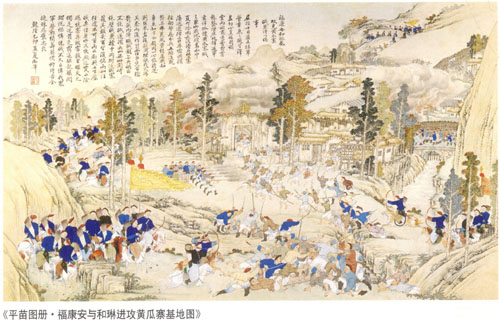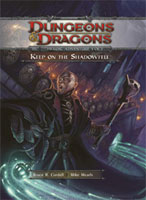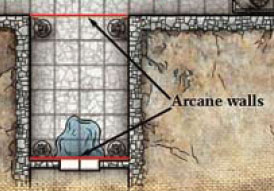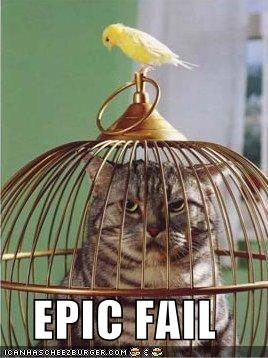 In a recent comment exchange with jdh417 regarding (Re-)Running the Megadungeon, I spoke about wandering monster encounters in OD&D:
In a recent comment exchange with jdh417 regarding (Re-)Running the Megadungeon, I spoke about wandering monster encounters in OD&D:
Practical experiment: OD&D says there’s a 1 in 6 chance of a wandering monster every 10 minutes in the dungeon. There’s only a 1 in 6 chance chance per day outside of the dungeon. Try following those rules strictly for a few sessions. You don’t even have to tell your players what you’re doing: They will find a way to get out of the dungeon.
(In practice, my OD&D game has dropped back to a 1 in 10 chance per turn. And, as I noted, this will drop even further if they’ve cleared a section of the dungeon. I’ll also reduce check rates if they’ve secured themselves or hidden themselves in some way, allowing for potential “camp in the dungeon overnight” scenarios. But I think the only way for a megadungeon to work is if the players can never feel completely safe while they’re inside it.)
But in quickly re-checking the OD&D rules for wandering monsters in the wilderness in order to make sure my memory was accurate for the details, I realized that I had been inadvertently glossing over a potentially fascinating distinction. From Volume 3: The Underworld & Wilderness Adventures, pg. 17-18:
At the end of day (turn) the referee will check to see if a monster has been encountered. The matrix below is for travel afoot or mounted. For travel afloat or in the air two die rolls are made — a 5 on the first one indicates an adventure in the mid-point of the day with waterbourne or aerial monsters; a 6 on the second die roll indicates that there is a normal adventure at the end of the day, and the table below is used.
What I want to call your particular attention to here is the phrase “the second die roll indicates that there is a normal adventure at the end of the day”.
See, the random charts which follow don’t include any information on the number of creatures encountered. They just determine type. Which presumably means that you should use the “Number Appearing” column from Volume 2: Monsters & Treasure. (Which is confirmed when you reference that volume and discover that this column is, in fact, marked with a footnote which reads, in part: “used primarily only for out-door encounters”.)
And that’s when the whole thing starts to make sense.
ROLLING A WANDERING MONSTER
Let me demonstrate by way of example. Allow me to roll up an actual wandering monster for a group of PCs traveling through a forest:
(1) I roll 1d8 and consult the “Woods” column to determine the type of encounter. I roll a 6, which is Men.
(2) I roll a 1d12 on the “Men” table. (This table includes four columns, one of which is “Desert (Mars)” and includes Red Martians, Tharks, Black Martians, Yellow Martians, and White Martians. Goddamn, that’s awesome. BID.) I use the “Typical” column, roll a 5, and get a result of “Bandits”.
(3) Now I flip over to Volume 2 and look up “Bandits”. There isn’t an individual listing on the Monster Type table, but “Men” appears generically. The Number Appearing for Men is 30-300, so I roll 1d10 x 30 and get 150.
(4) I flip to the description of Bandits on page 5:
BANDITS: Although Bandits are normal men, they will have leaders who are supernormal fighters, magical types, or clerical types. For every 30 bandits there will be one 4th level Fighting-Man; for every 50 bandits there will be in addition one 5th or 6th level fighter (die 1-3 = 5th level, die 4-6 = 6th level); for every 100 bandits there will be in addition one 8th or 9th level fighter (die 1-3 = 8th, die 4-6 = 9th). If there are over 200 bandits there will be a 50% chance for a Magic-User (die 1-4 = 10th level, die 5, 6 = 11th level) and a 25% chance for a Cleric of the 8th level. If there are exactly 300 bandits there will absolutely be a Magic-User, and the chance for a Cleric goes up to 50%. There is also a chance that there will be magical accouterments for the super-normal types […]
(5) So I have 150 bandits: That means I’ve got five 4th-level fighters. I also have three 5th- or 6th-level fighters, which turn out to be (roll) one 5th-level and two 6th-level fighters. And their leader will be an 8th-level fighter.
(6) The table for determining “magical accouterments” says that each fighter has a 5% chance per level to have a magical item, and I should check for armor, shield and sword. For the sake of this example, let’s just check for our 8th-level leader: 8 x 5 = 40% chance. Armor roll is 58, no armor. Shield roll is 33, so he has a magic shield. And sword roll is 44, so no sword.
(7) I flip to the Treasure tables. There isn’t a separate table for shields, but on pg. 24 there’s a table for Armor which includes shields. I roll three times on the table before generating a result (65) which includes a Shield +1.
(Weird note: There’s an example in the rulebook for how to generate bandits. It starts with, “Assume 183 bandits are encountered.” Which made me realize you could actually generate the number of bandits with 30d10. I did so just for kicks and generated… exactly 183 bandits.)
Total result? The Blood Shield Bandits, named after their fiery-haired leader who carries a shield of bright crimson into battle.
THE BANDIT ADVENTURE
My point with all this is that the OD&D rules for wandering monsters in the wilderness are not rules for generating random encounters in the sense commonly understood by later editions: These rules do not generate a single combat encounter. They are procedurally generating an entire adventure.
What does this adventure look like?
Probably something like this:
The Victorious Battle over the Bandits at Huanghua
In no small part because these rules are meant to gel with high-level play where the PCs are expected to be local baronial lords leading small feudal armies.
But even at lower levels, the encounter tables are telling you that you’re entering an area currently plagued by a large tribe of bandits. Does that mean getting waylaid on the road? Being forcibly deputized by the local lordling to deal with the problem? Being hired by a wealthy merchant whose daughter has been kidnapped? Being press-ganged by the bandits themselves and tasked with kidnapping the merchant’s wealthy daughter? All of the above? A dozen or so dice rolls have me pretty much brimming over with ideas.
In any case, the point is that you’re generating an adventure, just like the book says — something that the players can engage or ignore; bypass or be ambushed by; become embroiled with or skim past.
READING WITH FRESH EYES
Delving into the OD&D manuals continues to be a rewarding experience. I’m constantly amazed at how often I’ll realize that what I’m reading could actually mean something completely different and that I’m only defaulting to reading it in a particular way because of the conditioning imposed by thirty-plus years of RPGs which all went a different way.
In part, this gets back to my discussion of OD&D as the Ur-Game — a mirage that doesn’t actually exist because the rulebooks are open to so many different interpretations.
What fascinates me is the idea of the road that wasn’t traveled: All those passages whose enigmas were refined to read as “A” when they could have just as easily been read as “B”. (With “B” being potentially just as interesting.)
Since the OD&D PDFs are no longer legally available, people have occasionally asked me which OSR clone I recommend to take its place. The truth is that I don’t recommend any of them. OD&D is a severely flawed game, and all of the clones I’ve looked at have generally inherited its flaws while simultaneously (and probably necessarily) whitewashing out the ambiguities which I find rewarding to explore.
(UPDATE: The OD&D PDFs are once again legally available!)
















